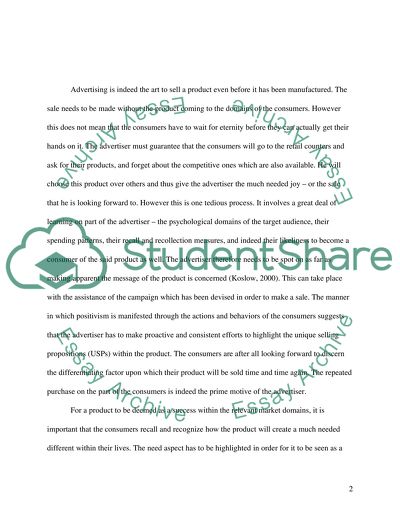Cite this document
(Advertising Exposure, Memory, and Choice Case Study, n.d.)
Advertising Exposure, Memory, and Choice Case Study. Retrieved from https://studentshare.org/marketing/1552141-evaluate-the-statement-a-successful-advertiser-makes-sure-that-their-product-has-been-noted-remembered-and-recalled-which-is-why-every-aspect-of-the-learning-process-is-vital-to-advertising
Advertising Exposure, Memory, and Choice Case Study. Retrieved from https://studentshare.org/marketing/1552141-evaluate-the-statement-a-successful-advertiser-makes-sure-that-their-product-has-been-noted-remembered-and-recalled-which-is-why-every-aspect-of-the-learning-process-is-vital-to-advertising
(Advertising Exposure, Memory, and Choice Case Study)
Advertising Exposure, Memory, and Choice Case Study. https://studentshare.org/marketing/1552141-evaluate-the-statement-a-successful-advertiser-makes-sure-that-their-product-has-been-noted-remembered-and-recalled-which-is-why-every-aspect-of-the-learning-process-is-vital-to-advertising.
Advertising Exposure, Memory, and Choice Case Study. https://studentshare.org/marketing/1552141-evaluate-the-statement-a-successful-advertiser-makes-sure-that-their-product-has-been-noted-remembered-and-recalled-which-is-why-every-aspect-of-the-learning-process-is-vital-to-advertising.
“Advertising Exposure, Memory, and Choice Case Study”. https://studentshare.org/marketing/1552141-evaluate-the-statement-a-successful-advertiser-makes-sure-that-their-product-has-been-noted-remembered-and-recalled-which-is-why-every-aspect-of-the-learning-process-is-vital-to-advertising.


